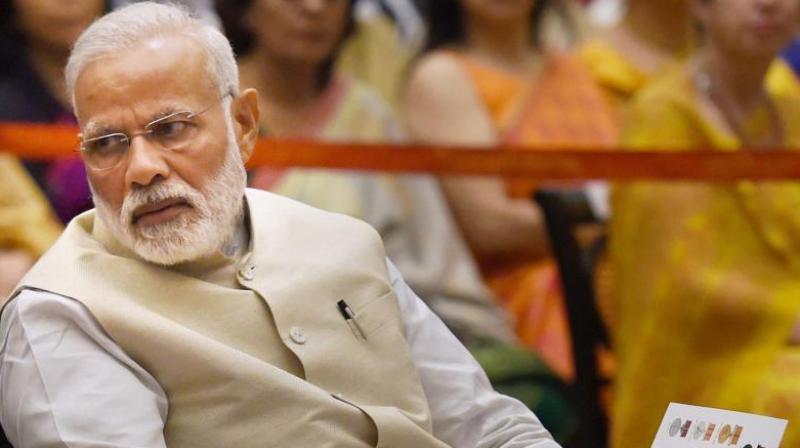Beating erstwhile giants such as Russia, Japan, Germany and Canada, India has emerged as the third largest power producer in the world with a total generation of 1,423 TWh (terrawatt hour ) in the year 2016, only behind China (6,015 TWh) and the United States (4,327 TWh).
Electricity production stood at 1,003.525 billion units between April 2017 and January 2018, according to a February 2018 report by India Brand Equity Foundation (IBEF), a trust established by the commerce ministry. With electricity production of 1,160.1 BU in India in FY17, the country witnessed growth of around 4.72 per cent over the previous fiscal year, backed by a plethora of power sector reforms and initiatives executed by the current government.
India achieved a 34.48% growth in electricity production by producing 1,160.10 BU in 2017 compared to 771.60 BU in 2010, which means that in these seven years, electricity production in India grew at a compound annual growth rate (CAGR) of 7.03%. The country now produces more energy than Japan and Russia, which had 27% and 8.77% more electricity generation capacity than India installed respectively, seven years ago.
As of January 2018, India has installed power capacity of 334.4 gigawatt (GW), making it the fifth largest installed capacity in the world after the European Union, China, United States and Japan. As per the 13th Five Year Plan, India is targeting capacity addition of a total of 100 GW (the current power production of United Kingdom) by the year 2022.
India has moved up 73 spots to rank 26th in the World Bank’s list of electricity accessibility in 2017. In September last year, the Government of India under the initiative of Piyush Goyal, Minister of State (Independent Charge) for Power, Coal, Renewable Energy and Mines, launched the Saubhagya scheme to provide electricity connections to over 40 million families in rural and urban areas by December 2018 at a cost of US$ 2.5 billion.
UDAY or Ujwal Discom Assurance Yojna, which was was launched in November 2015 to help loss-making discoms turn around financially, with support from their respective state governments, has also resulted in an improved performance of the participating companies during the last financial year. The scheme has been undeniably successful in achieving its most important objective – of restoring the financial health of DISCOMs – by transferring almost 75% of their debt to the state governments and reducing interest cost burden on the remaining 25% debt, according to the consultancy Bridge to India.
The Indian Government’s focus on attaining ‘Power for all’ has accelerated capacity addition in the country. The Ministry of Power set a target of 1,229.4 billion units of electricity to be generated in the financial year 2017-18, which is 50 BUs higher than the target for 2016-17. Around 293 global and domestic companies have committed to generate 266 GW of solar, wind, mini-hydel and biomass-based power in India over the next 5–10 years.
According to the report, power consumption is expected to increase from 1,160.1 BU in 2016 to 1,894.7 BU in 2022. The per capita demand for power in India due to a growing population and the rising number of electricity connections will make sure the power sector will have its hands full.
The rising demand also implies that the power sector has to maintain its goal on augmenting the renewable sources of energy. India ranks third among 40 countries in EY’s Renewable Energy Country Attractiveness Index, on the back of a strong focus by the government on promoting renewable energy, and the implementation of projects in a time-bound manner.
The government is planning to invite bids for the largest solar tender in the world, for installing 20 gigawatts (GW) of solar power capacity, which will give a boost to the manufacturing of solar power equipment in India.
In January 2017, the 2nd unit of the Kundankulam Nuclear Power Project attained a capacity of 1000MWe & this is anticipated to strengthen the overall power generation capacity in India. In February 2017, a 40-killowatt solar power plant was inaugurated at Don Bosco Higher Secondary School in Johrat City, Assam.
Over 280 million LED bulbs were distributed to consumers in India by Energy Efficiency Services Limited (EESL) under Unnati Jyoti by Affordable LEDs for All (UJALA) as on December 19th 2017, and 524.3 million LED bulbs were sold by private players till October 2017.
The government’s immediate goal is to generate two trillion units (kilowatt hours) of energy by 2019. This means doubling the current production capacity to provide 24x7electricity for residential, industrial, commercial and agriculture use. A total of 16,064 villages out of the 18,452 un-electrified villages in India have been electrified as of December 2017, as part of the target to electrify all villages by May 1st 2018.
The Power ministry is taking a number of steps and initiatives like a 10-year tax exemption for solar energy projects, in order to achieve India’s ambitious renewable energy targets of adding 175 GW of renewable energy, including an additional 100 GW of solar power, by the year 2022. The government has also sought to restart the stalled hydro power projects and increase the wind energy production target to 60 GW by 2022 from the current 20 GW.
